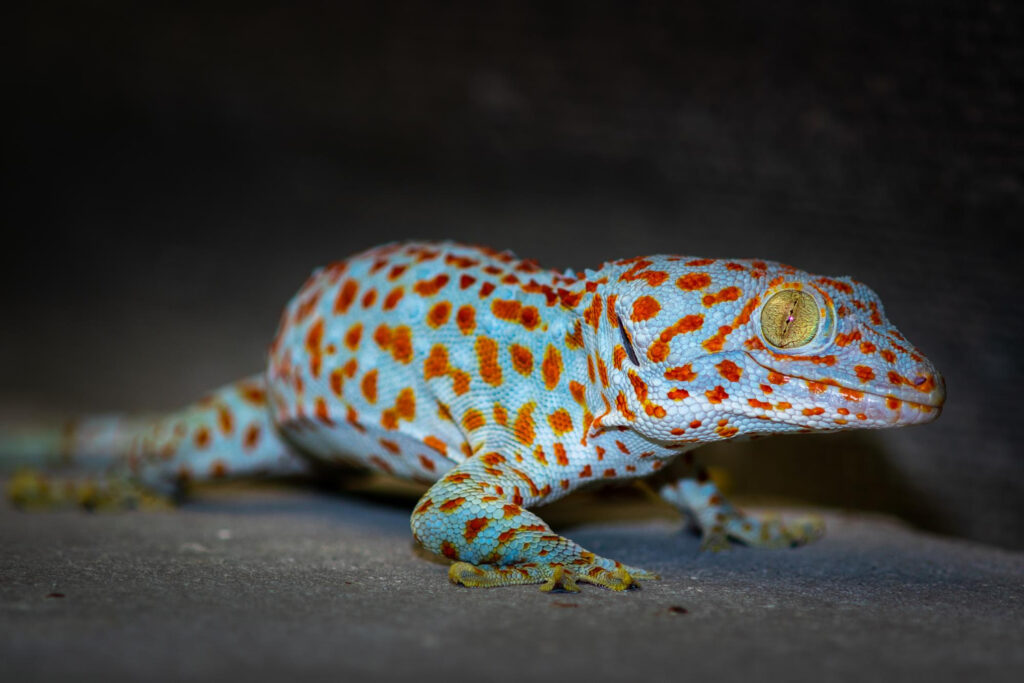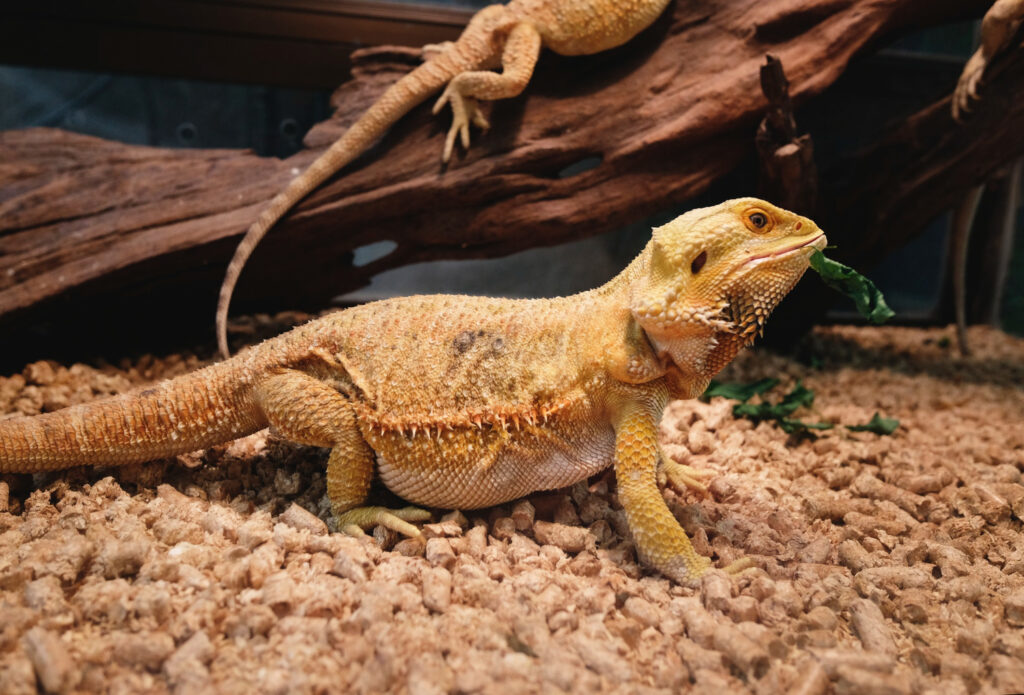Leopard Geckos are among the most popular reptile pets worldwide—and for good reason. With their docile nature, quirky personality, and manageable size, they’re ideal for beginners and seasoned reptile keepers alike. This complete guide will walk you through everything you need to know about Leopard Geckos, including their natural habitat, lifespan, diet, care, and fascinating facts that make them so unique.
Whether you’re considering getting one or already have a Leopard Gecko as a pet, this guide will help you understand how to provide the best environment for your scaly friend.
What Are Leopard Geckos?
Leopard Geckos (Eublepharis macularius) are small, insectivorous lizards native to the dry grasslands and deserts of Pakistan, Afghanistan, India, and Iran. Unlike most geckos, they have movable eyelids, clawed toes, and a chubby tail where they store fat reserves. Their name comes from their spotted, leopard-like skin, which adds to their exotic appeal.
These reptiles are nocturnal, meaning they’re most active during the evening and night. They are generally calm, easy to handle, and rarely aggressive, making them an excellent first pet for those new to reptiles.
Natural Habitat of Leopard Geckos
Leopard Geckos originate from arid, rocky, and semi-desert environments. Their wild habitats are characterised by:
- Loose, sandy soils with access to hiding crevices
- Daytime heat and cool night temperatures
- Sparse vegetation, offering limited cover from predators
Enclosure Setup
- Tank Size: Minimum 20-gallon tank for one adult gecko
- Substrate: Use reptile carpet, paper towels, or tile (avoid sand to prevent impaction)
- Hides: At least two—one warm, one cool
- Lighting: While they don’t need UVB lighting, it can support better health
- Heating: A heat mat under the tank (88–92°F on warm side, 70–75°F on cool side)
Humidity & Shedding
Despite coming from dry regions, Leopard Geckos require a humid hide to aid in shedding. This can be achieved using moist sphagnum moss inside a small shelter.
Lifespan of Leopard Geckos
One of the major appeals of Leopard Geckos is their impressive lifespan. When properly cared for in captivity, Leopard Geckos can live:
- 10 to 15 years on average
- Some live up to 20 years or more
Longevity depends on factors such as:
- Quality of diet
- Regular cleaning of their habitat
- Stress-free environment
- Consistent vet checkups
Leopard Gecko Diet: What Do They Eat?
Being insectivores, Leopard Geckos thrive on a diet of live insects. A varied and nutritious diet is vital for their health.
Safe Foods:
- Crickets
- Mealworms
- Dubia roaches
- Waxworms (occasional treat due to high fat)
Feeding Schedule:
- Juveniles: Daily feeding
- Adults: Every other day
Dust insects with calcium and vitamin D3 supplements at least 3 times a week to prevent metabolic bone disease.
Handling & Behaviour
Leopard Geckos are among the calmest reptiles and tolerate handling well, especially when introduced early.
Tips for Handling:
- Gently scoop from below
- Avoid grabbing the tail (they can drop it as a defence mechanism)
- Keep sessions short initially and gradually build trust
They are naturally curious and tend to explore their surroundings once they feel safe.
Breeding Leopard Geckos
If you plan to breed Leopard Geckos, make sure you’re prepared for the responsibilities involved.
Breeding Basics:
- Females reach maturity at 9–10 months
- Provide a lay box with moist substrate
- Incubation temperature affects the sex of hatchlings:
- Lower temp (around 80°F) → Females
- Higher temp (around 88°F) → Males
Breeding season typically runs from January to September, and females can lay multiple clutches of eggs in a season.
Leopard Gecko Morphs & Colours
One of the most exciting aspects of Leopard Geckos is the wide variety of morphs (colour and pattern variations) available. These include:
- Albino
- Blizzard
- High Yellow
- Tangerine
- Mack Snow
- Super Hypo
These morphs don’t affect their care needs but can significantly influence price and popularity among breeders and enthusiasts.
Common Health Issues in Leopard Geckos
Despite being hardy reptiles, Leopard Geckos can face several health issues if not properly cared for.
Watch for:
- Impaction: Caused by ingesting loose substrate
- Metabolic Bone Disease: Due to calcium deficiency
- Mouth Rot: From poor hygiene or stress
- Shedding Problems: Often due to low humidity
- Parasites: Can be introduced through live feed
Routine vet check-ups and good husbandry go a long way in preventing these issues.
Leopard Geckos as Pets: Pros & Cons
Pros:
- Easy to care for
- Long lifespan
- Gentle temperament
- No loud noises or smell
- Doesn’t require daily feeding as adults
Cons:
- Needs live insects
- Nocturnal nature might not suit everyone
- Can be prone to tail loss under stress
Fun Facts About Leopard Geckos
Let’s lighten the mood with some fascinating trivia:
- Leopard Geckos can regrow their tails if dropped.
- They lick their eyes to keep them clean and moist.
- They have vocal cords and may chirp when stressed or mating.
- Leopard Geckos use tail wiggling to communicate, especially during courtship or warning off threats.
- Their eyelids make them unique among geckos, most of which lack movable lids.

Common Myths About Leopard Geckos
Myth 1: Leopard Geckos Don’t Need Vet Visits
False. Reptiles need regular check-ups to stay healthy.
Myth 2: They Can Eat Any Insect
Avoid wild insects and fireflies. Stick to store-bought feeders.
Myth 3: Sand is a Natural Substrate
Wild geckos live on compacted clay, not sand. Sand causes impaction.
Myth 4: They’re Cold-Blooded So They Don’t Feel Cold
They require proper heat zones or they can become ill.
How to Choose the Right Leopard Gecko
When selecting a Leopard Gecko, look for:
- Clear eyes and alertness
- Thick tail
- Smooth, wound-free skin
- Healthy breathing (no wheezing)
Ask about the gecko’s age, diet, and behaviour.
Leopard Gecko Costs: What to Expect
Initial Setup:
- Tank & heating: £100–£150
- Substrate and hides: £30–£50
- Thermometers: £20–£30
- Insects & supplements: £20–£30
Ongoing Monthly:
- Food: £10–£20
- Supplements: £5–£10
- Electricity: £5–£10
Vet Visits:
- Check-ups: £30–£50
- Emergencies: £60+
Seasonal Care Tips
Winter:
- Watch for brumation (natural slowdown)
- Ensure consistent heating
Summer:
- Avoid overheating
- Monitor humidity and airflow
Leopard Gecko Enrichment Ideas
Keep your Leopard Gecko mentally stimulated:
- Rearranged tank layout
- Climbing items
- Tongs for feeding
- Exploration in a safe space
How to Bond with Your Leopard Gecko
Steps:
- Let it adjust to its new home
- Use soft voice cues
- Hand-feed occasionally
- Move slowly
- Supervised time outside the tank
Travelling with Your Leopard Gecko
Short Trips:
- Pre-fill food bowls
- Use heating timers
Long Trips:
- Arrange pet-sitting
- Leave care instructions
- Consider reptile boarding
Leopard Geckos in Education & Therapy
Due to their calm nature, Leopard Geckos are used in:
- Classroom education
- Reptile awareness days
- Therapy for anxiety and autism
Comparison: Leopard Geckos vs Bearded Dragons
Bearded Dragons are another popular reptile pet, often compared to Leopard Geckos.
Size:
- Leopard Geckos: 7–10 inches
- Bearded Dragons: 18–24 inches
Lifespan:
- Leopard Geckos: 10–20 years
- Bearded Dragons: 8–12 years
Diet:
- Leopard Geckos: Insectivores
- Bearded Dragons: Omnivores (insects + vegetables)
Temperament:
- Leopard Geckos: Shy but friendly
- Bearded Dragons: Social and interactive
Enclosure Requirements:
- Leopard Geckos: 20-gallon minimum
- Bearded Dragons: 40-gallon minimum (due to larger size)
Cost of Care:
- Leopard Geckos: Moderate
- Bearded Dragons: Higher (due to food and lighting needs)
Overall, Leopard Geckos are a better choice for beginners due to their smaller size, simpler care needs, and quieter behaviour.
Conclusion
Leopard Geckos offer an ideal entry into the world of reptiles, combining low-maintenance care with endearing personality and striking looks. Whether you’re fascinated by their evolutionary adaptations or drawn in by their friendly nature, Leopard Geckos are sure to win your heart.
From understanding their habitat and diet to appreciating their quirky behaviours and morphs, this guide provides everything you need to give your Leopard Gecko a long, healthy life.







